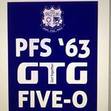Farouk Gulsara's Blog, page 145
June 7, 2017
Fear fear itself?
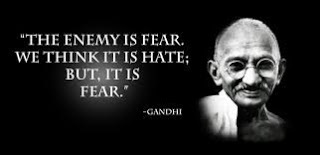 They say love makes the world around. It is said to be the last bastion that would the human race from annihilation. Our neocortical part of the brain, no doubt brought about leaps of advances to ease civilisation, from organised building civil societies, mammoth engineering feats and abstract thoughts, it is no match for the dormant reptilian brain which is lurking in the background. It is scheming its next movement to destroy his neighbours not only for mating and food but just he does not share his beliefs, dress and speak differently.
They say love makes the world around. It is said to be the last bastion that would the human race from annihilation. Our neocortical part of the brain, no doubt brought about leaps of advances to ease civilisation, from organised building civil societies, mammoth engineering feats and abstract thoughts, it is no match for the dormant reptilian brain which is lurking in the background. It is scheming its next movement to destroy his neighbours not only for mating and food but just he does not share his beliefs, dress and speak differently.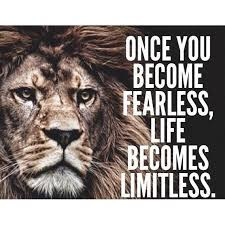
It is fear that makes the world go around. Fear is the one that puts us on our toes to leap forward to new heights, new discoveries and innovate ways to lead to our destruction. Our fear of foreigners, of people different from us who do things different than how we do things push us to the limit to 'protect' ourselves from the destruction of our own convictions. We satisfy ourselves in short term thinkings to create an unreal picture of the future. We fail to see our own follies. We cherry pick what we want to see and hate to reflect upon ourselves and our actions.
“Both fear and reason are essential to human survival, but the relationship between them is unbalanced. Reason may sometimes dissipate fear, but fear frequently shuts down reason.” Al Gore in the book 'Assault on Reason'.http://asok22.wix.com/rifle-range-boy
http://.facebook.com/farouk.gulsara
www.riflerangeboy.com

Published on June 07, 2017 09:09
June 5, 2017
A reason to reason it out!
Chasing a Mirage (2008)
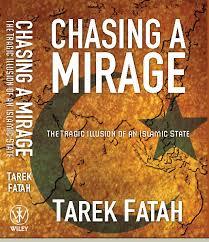 The tragic illusion of an Islamic State
Author: Tarek Fatah
The tragic illusion of an Islamic State
Author: Tarek Fatah
Islam has not been receiving a good report card of late. It needs rebranding and an exercise in an improvement of public perception. Tarek Fatah, a vocal advocate against the militancy in Islam and their return to the so-called 'glory days of Islam', is famous for spreading the idea of rational thinking when it comes to religious practices. He opposes unquestioning loyalty to the ulamas and the man-made laws in the guise of religion. Unfortunately, his voice together with the same minded intellectuals like Parvez Hoodbhoy and Hussain Haqqani who call for ijtihad (using the mind to reason) are muffled in the ever loud yells of the radical-minded bigots who are hellbent to infuse their brand of religion to the masses.
Even though many disillusioned Muslim citizens from Muslim dominated countries migrate to non-Muslim countries for a better life, their umbilical cord to their old practices are not really severed. They seem to have a chip on their shoulder, thinking that they are special and demand special brand of justice and special treatment by virtue of their faith. Fatah tells them that they are not special and need to assimilate into their new country.
Fatah tells the preachers who glorify the good old days which they label as 'The Golden Era of Islam' was anything but peaceful. In quite elaborate details, he covers the evolution (or rather failure) of politics and governance in many major Islamic countries, Pakistan (his native country), Saudi Arabia, Iran and Palestine. Pakistan, a country carved out of one the richest states in India, with the wealth of culture and agriculture, built to be a model nation based on the principles of Islam has ended up as a failed state and bedrock for terrorist activities. Saudi Arabia is a feudalistic country run by a family which never had any free elections. Its laws are misogynistic and tribal at best. Iran has a Surah council which must be composed of leaders of Arab descent even though Persians make up Iran. Palestine is a 70-year old problem with no solution in sight. Fatah reiterates that the infusion of Islam is political in nature. Rather than trying to live in a state practising Islam, these radically minded peddlers of extremism want to create an Islamic State (IS). Even equality among Ummah is the cornerstone of the religion, a hierachial order is very much alive based on gender, race (with the Arabs in the highest pecking order) and skin colour.
The author narrates at great length the history of Islam from the time of Prophet Muhammad all through the various Islamic Empires. Even though IS wants to bring the world back to the 7th century, which it describes as the Golden Era of Islam, there had been turmoil all through that time. Even after the demise of the Prophet, there have been major unrests over the succession. From time immemorial, people have been using the religion for political power and control over the masses.
The Caliphs had been brutally slain and the history of the Islamic is filled with gore, spilling of blood, vendetta, double crossing and desert tribal justice. The teachings of the religion of equality of races and gender fairness almost went out of the window after the Prophet's passing. Even founders of Islamic schools of thought were imprisoned or brutally killed for failing to keep up with the whims of the rulers of the day.
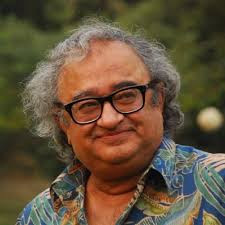 The only time that there is a semblance of civilisation is during the reign of the Abbasids in Persia in the 9th century when philosophy, music and the Islamic culture reached its zenith. It was the time when it was the place where everyone wanted to be, with its coffee bars, music, art and a kind of open-mic stage for intellectual discourses. Still, war and infighting went on.
The only time that there is a semblance of civilisation is during the reign of the Abbasids in Persia in the 9th century when philosophy, music and the Islamic culture reached its zenith. It was the time when it was the place where everyone wanted to be, with its coffee bars, music, art and a kind of open-mic stage for intellectual discourses. Still, war and infighting went on.
Hence, the author suggests that instead of reminiscing the past, we should be in tune with the present and be able to face the future, keeping up with the rest of the human race.
He also has a bone to pick with the implementation of the Sharia Law, the unnecessary loss of lives in the name of jihad. There is a concerted of the jihadists to create a siege mentality amongst Muslims that the non-Muslims' world wants to bring them down. There is a hidden agenda to suppress women by insisting that hijab should be a pre-requisite for a lady to show her Islam-ness. What he fails to understand is what have the Arabs contributed to mankind that Muslims are willing to part their own age old culture and traditions to ape the Arabic way of living and dressing!
Tarek Fatah can be described as a rationalist just like the Mu'tazilites in the 9th century who were eager to argue intellectually on the topic of Divinity. Just like the Asharites who literally pulverised their movement, the members of Islamic State want to shut down any decent discussion on religion but to follow their Man-made laws! There is a difference between a state with Islam and an Islamic State.http://asok22.wix.com/rifle-range-boy
http://.facebook.com/farouk.gulsara
www.riflerangeboy.com
 The tragic illusion of an Islamic State
Author: Tarek Fatah
The tragic illusion of an Islamic State
Author: Tarek Fatah
Islam has not been receiving a good report card of late. It needs rebranding and an exercise in an improvement of public perception. Tarek Fatah, a vocal advocate against the militancy in Islam and their return to the so-called 'glory days of Islam', is famous for spreading the idea of rational thinking when it comes to religious practices. He opposes unquestioning loyalty to the ulamas and the man-made laws in the guise of religion. Unfortunately, his voice together with the same minded intellectuals like Parvez Hoodbhoy and Hussain Haqqani who call for ijtihad (using the mind to reason) are muffled in the ever loud yells of the radical-minded bigots who are hellbent to infuse their brand of religion to the masses.
Even though many disillusioned Muslim citizens from Muslim dominated countries migrate to non-Muslim countries for a better life, their umbilical cord to their old practices are not really severed. They seem to have a chip on their shoulder, thinking that they are special and demand special brand of justice and special treatment by virtue of their faith. Fatah tells them that they are not special and need to assimilate into their new country.
Fatah tells the preachers who glorify the good old days which they label as 'The Golden Era of Islam' was anything but peaceful. In quite elaborate details, he covers the evolution (or rather failure) of politics and governance in many major Islamic countries, Pakistan (his native country), Saudi Arabia, Iran and Palestine. Pakistan, a country carved out of one the richest states in India, with the wealth of culture and agriculture, built to be a model nation based on the principles of Islam has ended up as a failed state and bedrock for terrorist activities. Saudi Arabia is a feudalistic country run by a family which never had any free elections. Its laws are misogynistic and tribal at best. Iran has a Surah council which must be composed of leaders of Arab descent even though Persians make up Iran. Palestine is a 70-year old problem with no solution in sight. Fatah reiterates that the infusion of Islam is political in nature. Rather than trying to live in a state practising Islam, these radically minded peddlers of extremism want to create an Islamic State (IS). Even equality among Ummah is the cornerstone of the religion, a hierachial order is very much alive based on gender, race (with the Arabs in the highest pecking order) and skin colour.
The author narrates at great length the history of Islam from the time of Prophet Muhammad all through the various Islamic Empires. Even though IS wants to bring the world back to the 7th century, which it describes as the Golden Era of Islam, there had been turmoil all through that time. Even after the demise of the Prophet, there have been major unrests over the succession. From time immemorial, people have been using the religion for political power and control over the masses.
The Caliphs had been brutally slain and the history of the Islamic is filled with gore, spilling of blood, vendetta, double crossing and desert tribal justice. The teachings of the religion of equality of races and gender fairness almost went out of the window after the Prophet's passing. Even founders of Islamic schools of thought were imprisoned or brutally killed for failing to keep up with the whims of the rulers of the day.
 The only time that there is a semblance of civilisation is during the reign of the Abbasids in Persia in the 9th century when philosophy, music and the Islamic culture reached its zenith. It was the time when it was the place where everyone wanted to be, with its coffee bars, music, art and a kind of open-mic stage for intellectual discourses. Still, war and infighting went on.
The only time that there is a semblance of civilisation is during the reign of the Abbasids in Persia in the 9th century when philosophy, music and the Islamic culture reached its zenith. It was the time when it was the place where everyone wanted to be, with its coffee bars, music, art and a kind of open-mic stage for intellectual discourses. Still, war and infighting went on.Hence, the author suggests that instead of reminiscing the past, we should be in tune with the present and be able to face the future, keeping up with the rest of the human race.
He also has a bone to pick with the implementation of the Sharia Law, the unnecessary loss of lives in the name of jihad. There is a concerted of the jihadists to create a siege mentality amongst Muslims that the non-Muslims' world wants to bring them down. There is a hidden agenda to suppress women by insisting that hijab should be a pre-requisite for a lady to show her Islam-ness. What he fails to understand is what have the Arabs contributed to mankind that Muslims are willing to part their own age old culture and traditions to ape the Arabic way of living and dressing!
Tarek Fatah can be described as a rationalist just like the Mu'tazilites in the 9th century who were eager to argue intellectually on the topic of Divinity. Just like the Asharites who literally pulverised their movement, the members of Islamic State want to shut down any decent discussion on religion but to follow their Man-made laws! There is a difference between a state with Islam and an Islamic State.http://asok22.wix.com/rifle-range-boy
http://.facebook.com/farouk.gulsara
www.riflerangeboy.com

Published on June 05, 2017 09:01
June 4, 2017
How do you feel when people judge you? Do you judge people as well? #JudgingPeople
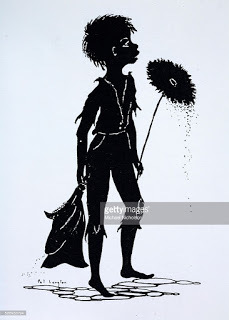 Written for IndiSpire... Edition 172
Written for IndiSpire... Edition 172
Growing up in the poorer side of town, people generally did not form any high opinion about me. My physical attributes did not compensate for the deficiency. Whether one likes to admit or not, society judges. A fairer skin would perform better in the impression department and I fail miserably. I would not be surprised if people do judge me to be incapable, unimpressive and unconvincing. But the question is, "do I give a damn?"
It is a free world and everyone is entitled to the opinions. Just like how I have mine. I do not owe anyone a living just like they, on me.
One humbling experience about judging others was shoved down upon me a good 24 years ago... This posting is an old one from my collection in Rifle Range Boy.
Back in early 90s, whilst I was still a green horned newbie at the art of healing in Malacca, I was approached in the course of my daily dealings, by a lady who despite her outwardly ultra conservative appearance of being dressed in a hijab, looked in the eye and asked whether there was any way that her 3month fetus could be screened for Down Syndrome.
From her dressing, it did not require a rocket scientist to guess her views on prenatal screening and termination of pregnancy.[image error] After a protracted discussion, I discovered that her previous child has Down Syndrome and needed multiple surgeries for heart septal defects and Hirschsprung's disease even before he was one. Seeing the puny one cut open and pricked repeatedly was just simply too much for her to stomach. And the monthly follow up the Capital City just drained here physically and financially. Even before she could recover from the trauma of having a special child, in rolls in another pregnancy (through act of Man and The Divine Powers) in came the ensuing uncertainties. Rather than seeing history repeating itself, she was willing to undergo whatever test even a termination of pregnancy, if warranted, than to deliver a Down Syndrome baby despite her religious conviction and country laws because she had first hand experience of dealing with a special child.
It is easy to judge others using our life experience as a yardstick of how everybody else should live. When a similar malady strikes us, all the rules and regulations, which in normal times would be fought by tooth and nail to be upheld, just goes out of the window!
This reminds me of a Lat cartoon published in the local dailies at a time when moral policing was the flavour of the month (it still is). It was a caricature of two elderly husband and wife couple in their 70s. The husband was reading aloud about the banning of Muslim girls in beauty peagents. The wife replies that it is improper to expose too much in public. To this, the husband replies, "I wonder who was the 1947 Miss Ratu Ronggeng? And the wife bows her head in embarrassment!
It goes on to say that we make rules and regulations for others to follow but when we are the affected party, somehow the bar is lowered or the goal post is shifted!
We judge others using yardsticks impressed upon us in our childhood. We are told that is the way, the only way to do it. With age, hopefully, maturity and a few hard knocks and dent from the School of Life, we soon realise that we have our ways, they have their ways, the right way, the correct way, the only way, may just not exist!http://asok22.wix.com/rifle-range-boy
http://.facebook.com/farouk.gulsara
www.riflerangeboy.com

Published on June 04, 2017 01:51
June 3, 2017
It is what we eat!
Why We Get Fat (and what to do about it)
Gary Taubes
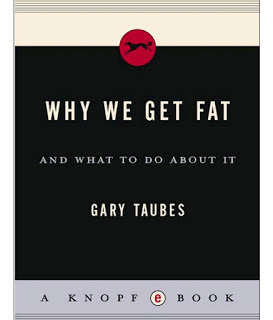
For the most part of Man's existence, over 99 % percent of our lives of Earth, our food pyramid had been quite different. If now, carbohydrate forms the broadest base of the pyramid, it was never like this before. As hunters and gatherers, our food mainly composed of protein and fat. Carbohydrate constituted a small portion and was found in complex forms, not refined.
Come late 19th century and beyond, we started loads of carbohydrate both in simple refined forms like sugars and complex ones like in potato, wheat and rice. I suppose it must have been quite alright when we were members of an agrarian society but it soon became toxic when our lifestyles became more sedentary with the ease of performing tasks after leaps in science and technology.
So, it is the carbohydrate that makes us fat. Insulin has pushed to the brim that our systems have been hardwired to use glucose as the first resource of energy. Ketones which can be utilised for many important functions, including the brain, stay in the background. Insulin stores extra glucose as unhealthy fat. Instead of using fat for energy at times distress, we instead crave for more glucose via hunger mechanisms or use our protein reserves. On top of that, many endogenous hormones and genetic predispositions determine where fat is reserved in the body. The longer we have fat deposited in our bodies, the harder we find it to get rid.
The author describes the oft-prescribed fat laden food as the villain for the aetiology of various lifestyle diseases like heart diseases, obesity and diabetic as fallacious. He suggests reducing carbohydrates, ketogenic diets and Palaeolithic diets as a way to rein weight loss and healthier living. Exercise keeps fit and increases metabolism but paradoxically increases appetite. Hence, it cannot be used as a modality to reduce weight.http://asok22.wix.com/rifle-range-boy
http://.facebook.com/farouk.gulsara
www.riflerangeboy.com
Gary Taubes

For the most part of Man's existence, over 99 % percent of our lives of Earth, our food pyramid had been quite different. If now, carbohydrate forms the broadest base of the pyramid, it was never like this before. As hunters and gatherers, our food mainly composed of protein and fat. Carbohydrate constituted a small portion and was found in complex forms, not refined.
Come late 19th century and beyond, we started loads of carbohydrate both in simple refined forms like sugars and complex ones like in potato, wheat and rice. I suppose it must have been quite alright when we were members of an agrarian society but it soon became toxic when our lifestyles became more sedentary with the ease of performing tasks after leaps in science and technology.
So, it is the carbohydrate that makes us fat. Insulin has pushed to the brim that our systems have been hardwired to use glucose as the first resource of energy. Ketones which can be utilised for many important functions, including the brain, stay in the background. Insulin stores extra glucose as unhealthy fat. Instead of using fat for energy at times distress, we instead crave for more glucose via hunger mechanisms or use our protein reserves. On top of that, many endogenous hormones and genetic predispositions determine where fat is reserved in the body. The longer we have fat deposited in our bodies, the harder we find it to get rid.
The author describes the oft-prescribed fat laden food as the villain for the aetiology of various lifestyle diseases like heart diseases, obesity and diabetic as fallacious. He suggests reducing carbohydrates, ketogenic diets and Palaeolithic diets as a way to rein weight loss and healthier living. Exercise keeps fit and increases metabolism but paradoxically increases appetite. Hence, it cannot be used as a modality to reduce weight.http://asok22.wix.com/rifle-range-boy
http://.facebook.com/farouk.gulsara
www.riflerangeboy.com

Published on June 03, 2017 09:01
June 1, 2017
Another Vietnam (1965 - 1975)

Unseen images of the war from the winning side
by Alex Q. Arbuckle
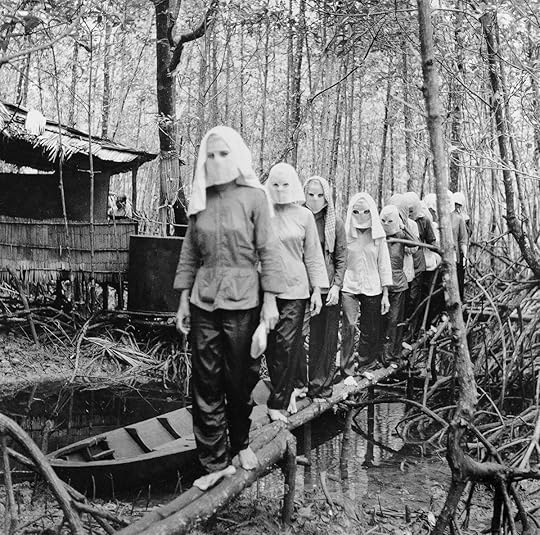 1972
1972Activists meet in the Nam Can Forest, wearing masks to hide their identities from one another in a case of capture and interrogation. From here in the mangrove swamps of the Mekong Delta, forwarding images to the North was difficult. "Sometimes the photos were lost or confiscated on the way," said the photographer.IMAGE: VO ANH KHANH/ANOTHER VIETNAM/NATIONAL GEOGRAPHIC BOOKS
UPDATE, Feb. 10, 2016, 9:30 a.m.: Based on serial numbers visible on the tail fins, readers have deduced that the crashed aircraft in the sixth photo is AJ 310, piloted by Lt. Stephen Owen Musselman, which was downed near Hanoi on Sept. 10, 1972.For much of the world, the visual history of the Vietnam War has been defined by a handful of iconic photographs: Eddie Adams’ image of a Viet Cong fighter being executed, Nick Ut’s picture of nine-year-old Kim Phúc fleeing a napalm strike, Malcolm Browne’s photo of Thích Quang Duc self-immolating in a Saigon intersection. Many famous images of the war were taken by Western photographers and news agencies, working alongside American or South Vietnamese troops. But the North Vietnamese and Viet Cong had hundreds of photographers of their own, who documented every facet of the war under the most dangerous conditions. Almost all were self-taught and worked for the Vietnam News Agency, the National Liberation Front, the North Vietnamese Army or various newspapers. Many sent in their film anonymously or under a nom de guerre, viewing themselves as a humble part of a larger struggle.We had to be extremely careful because we had limited amounts of film that had been distributed to us by our paper. For us, one photo was like a bullet. NGUYEN DINH UU
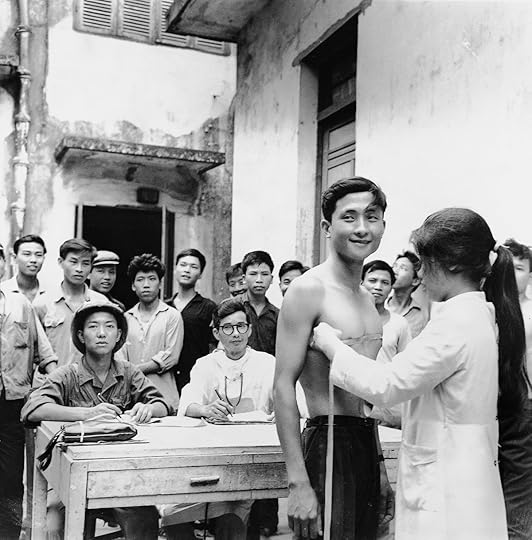 July 1967
July 1967New recruits undergo physical examinations in Haiphong. The North's volunteer system was transformed into a mandatory system in 1973 when all able-bodied males were drafted. From a corps of around 35,000 men in 1950, the NVA grew to over half a million men by the mid-'70s, a force the U.S. military conceded was one of the finest in the world.IMAGE: BAO HANH/ANOTHER VIETNAM/NATIONAL GEOGRAPHIC BOOKSEquipment and supplies were precious. Processing chemicals were mixed in tea saucers with stream water, and exposed film was developed under the stars. One photographer, Tram Am, only had a single roll of film, 70 frames, for the duration of the war.Faced with the constant threat of death by bombing, gunfire or the environment, these photographers documented combat, civilian life, troops on the Ho Chi Minh Trail, resistance movements in the Mekong Delta, and the bloody impact of the war on the innocent.Some were photographing to document history, while others strove to use their cameras as weapons in the propaganda war. Shooting clandestinely in the South, Vo Anh Khanh could never get his photos to Hanoi but exhibited them in the mangrove swamps of the Mekong Delta to inspire resistance.Many of these photographs have rarely been seen in Vietnam, let alone in the rest of the world. In the early 1990s, photojournalists Tim Page and Doug Niven started tracking down surviving photographers. One had a dusty bag of never-printed negatives, and another had his stashed under the bathroom sink. Vo Anh Khanh still kept his pristine negatives in a U.S. ammunition case, with a bed of rice as a desiccant.One hundred eighty of these unseen photos and the stories of the courageous men who made them are collected in the book Another Vietnam: Pictures of the War from the Other Side .
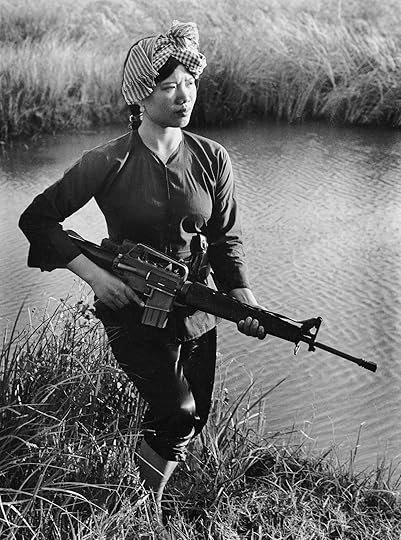 1973A Viet Cong guerrilla stands guard in the Mekong Delta. "You could find women like her almost everywhere during the war," said the photographer. "She was only 24 years old but had been widowed twice. Both her husbands were soldiers. I saw her as the embodiment of the ideal guerrilla woman, who'd made great sacrifices for her country."IMAGE: LE MINH TRUONG/ANOTHER VIETNAM/NATIONAL GEOGRAPHIC BOOKS
1973A Viet Cong guerrilla stands guard in the Mekong Delta. "You could find women like her almost everywhere during the war," said the photographer. "She was only 24 years old but had been widowed twice. Both her husbands were soldiers. I saw her as the embodiment of the ideal guerrilla woman, who'd made great sacrifices for her country."IMAGE: LE MINH TRUONG/ANOTHER VIETNAM/NATIONAL GEOGRAPHIC BOOKS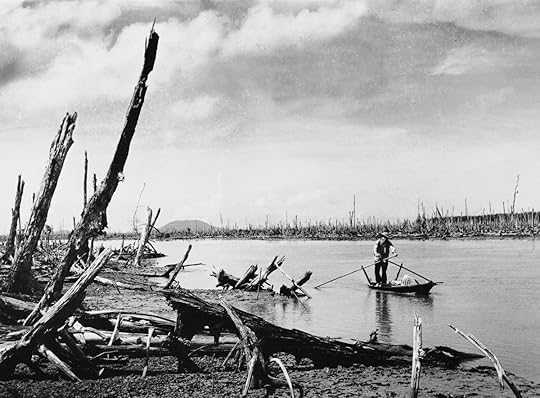 1970A guerrilla in the Mekong Delta paddles through a mangrove forest defoliated by Agent Orange. The Americans denuded the landscape with chemicals to deny cover to the Viet Cong. The photographer was sickened by what he saw, since the Vietnamese regard mangrove forests as bountiful areas for agriculture and fishing.IMAGE: LE MINH TRUONG/ANOTHER VIETNAM/NATIONAL GEOGRAPHIC BOOKS
1970A guerrilla in the Mekong Delta paddles through a mangrove forest defoliated by Agent Orange. The Americans denuded the landscape with chemicals to deny cover to the Viet Cong. The photographer was sickened by what he saw, since the Vietnamese regard mangrove forests as bountiful areas for agriculture and fishing.IMAGE: LE MINH TRUONG/ANOTHER VIETNAM/NATIONAL GEOGRAPHIC BOOKSThe vast dark forest was my giant darkroom. In the morning I’d rinse the prints in a stream and then hang them from trees to dry. In the afternoon I’d cut them to size and do the captions. I’d wrap the prints and negatives in paper and put them in a plastic bag, which I kept close to my body. That way the photos would stay dry and could be easily found if I got killed.
LAM TAN TAI
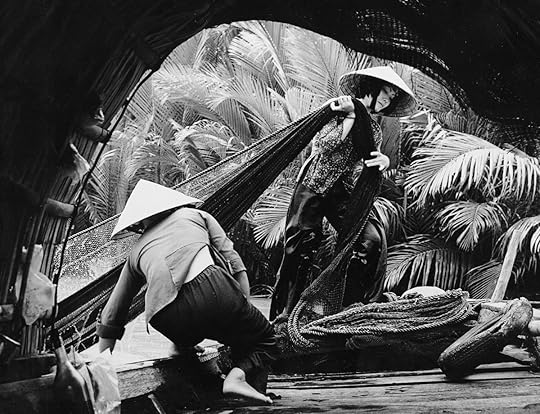 1974
1974Women haul in heavy fishing nets on the upper branch of the Mekong River, taking over a job usually done exclusively by men.
IMAGE: LE MINH TRUONG/ANOTHER VIETNAM/NATIONAL GEOGRAPHIC BOOKS
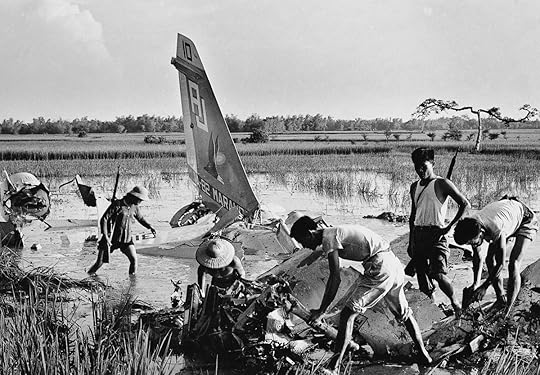 September 1972
September 1972Militia members sort through the wreckage of a downed US Navy plane on the outskirts of Hanoi. This is likely the debris of the A-7C Corsair II flown by Lt. Stephen Owen Musselman, which was hit by SAMs just south of Hanoi while supporting a B-52 bombing mission on September 10, 1972. Lt. Musselman ejected from his aircraft before it crashed. He was MIA until March 1, 1978, when the Secretary of the Navy approved a Presumptive Finding of Death. On July 7, 1981, remains which were confirmed to be his were returned to the United States by the government of Vietnam.
IMAGE: DOAN CONG TINH/ANOTHER VIETNAM/NATIONAL GEOGRAPHIC BOOKSDuring the American bombing, I took my most memorable photos. I actually shot a photo of Senator John McCain’s plane falling out of the sky over Hanoi. I was proud of that photo and wanted it to convey a message of patriotism in the face of foreign invasion.
VU BA
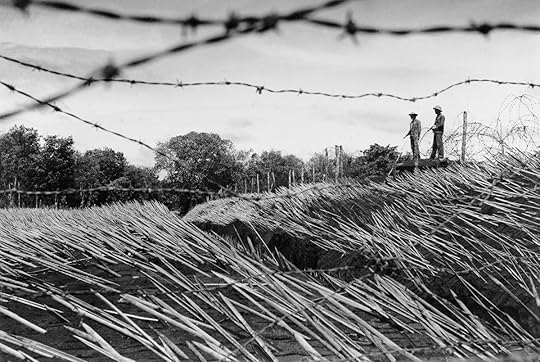 1972
1972Guerillas guard an outpost on the Vietnam-Cambodia border protected by poisoned bamboo punji stakes. Sharpened then hardened with fire, punji stakes were often hidden where enemy soldiers would step on them. Such booby traps were meant to wound, not kill because wounded soldiers slowed down their unit, and medevacs gave away its position.
IMAGE: LE MINH TRUONG/ANOTHER VIETNAM/NATIONAL GEOGRAPHIC BOOKS
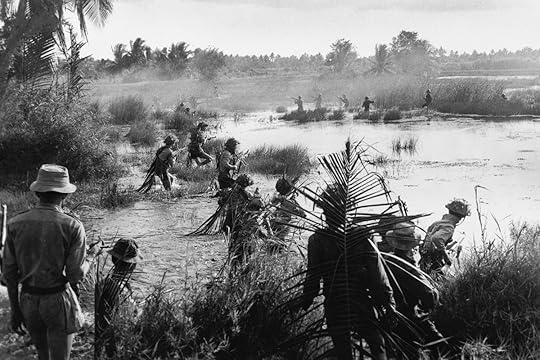 Date unknown
Date unknownViet Cong meet the enemy face-to-face, most likely in the Mekong Delta or Plain of Reeds. This rare image shows both sides in combat, ARVN soldiers at the top and Viet Cong in the foreground. The VC have flanked the enemy at left and right, which likely meant the ARVN unit was wiped out.
IMAGE: HOANG MAI/ANOTHER VIETNAM/NATIONAL GEOGRAPHIC BOOKS
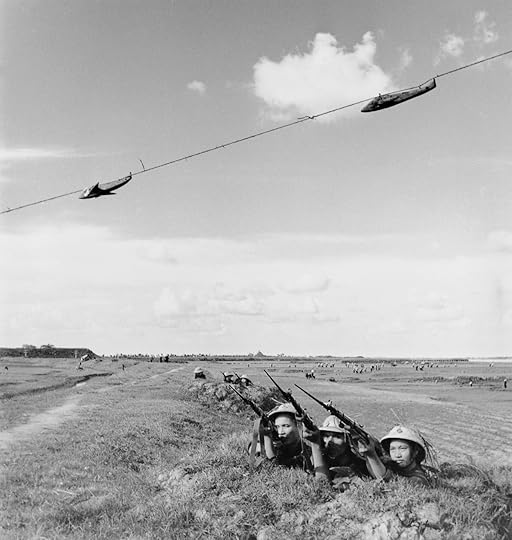 September 1965
September 1965Using overhead targets, a militia company practices firing ahead of speeding aircraft in Thanh Tri. Even using antiquated WWII rifles such as these, the Vietnamese were able to cripple or down many U.S. aircraft. This militia group, Company #6 of the Yen My Commune, earned the title of "Excellent Militia" three years in a row.
IMAGE: MINH DAO/ANOTHER VIETNAM/NATIONAL GEOGRAPHIC BOOKS
We even came up with a new form of flash photography to illuminate our fighters and villagers who were living in bomb shelters and tunnels. We emptied gunpowder from rifle cartridges onto a small handheld device and then lit the gunpowder with a match. The burning powder provided all the light we needed.
MAI NAM
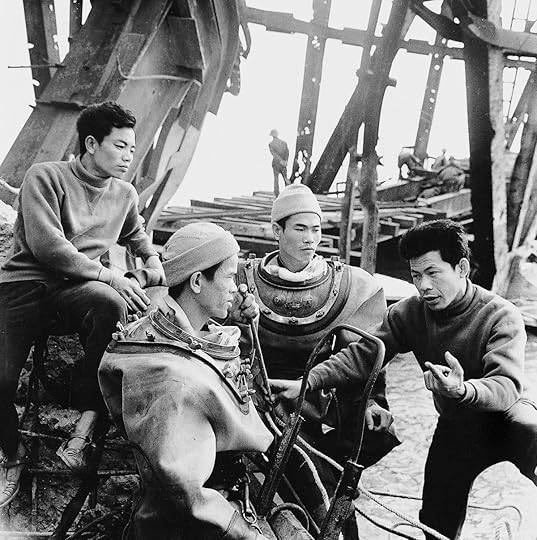 1973Construction workers discuss repairs of the bombed out Ham Rong Bridge, in central North Vietnam. The only route across the Ma River for heavy trucks and machinery, the bridge was heavily defended, and several U.S. planes were shot down nearby. An American MIA search team found pilot remains there.
1973Construction workers discuss repairs of the bombed out Ham Rong Bridge, in central North Vietnam. The only route across the Ma River for heavy trucks and machinery, the bridge was heavily defended, and several U.S. planes were shot down nearby. An American MIA search team found pilot remains there.IMAGE: UNKNOWN PHOTOGRAPHER/ANOTHER VIETNAM/NATIONAL GEOGRAPHIC BOOKS
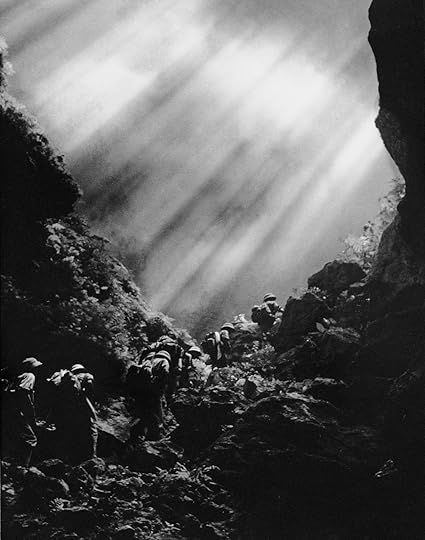 1966Troops walk the Ho Chi Minh Trail in the Truong Son Mountains, which form the 750-mile-long spine of Vietnam, stretching along much of the country's western border. To the soldiers of the North, the Ho Chi Minh Trail was known as the Truong Son Road.
1966Troops walk the Ho Chi Minh Trail in the Truong Son Mountains, which form the 750-mile-long spine of Vietnam, stretching along much of the country's western border. To the soldiers of the North, the Ho Chi Minh Trail was known as the Truong Son Road.IMAGE: LE MINH TRUONG/ANOTHER VIETNAM/NATIONAL GEOGRAPHIC BOOKS
I was certainly not taking photos for their aesthetic appeal. I was not thinking of beauty. Burned and shattered homes and dead bodies are not pretty. Any pretence of aesthetics was replaced by our purpose of recording the war.
DUONG THANH PHONG
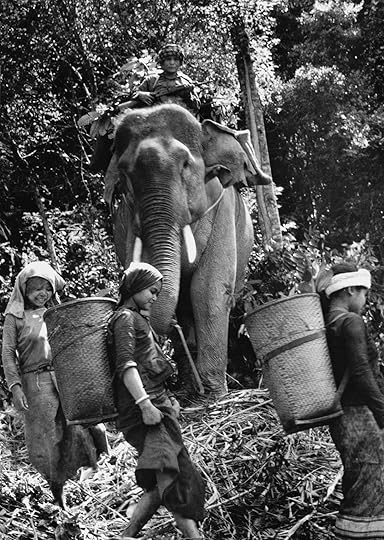 March 1971Laotian guerrillas haul supplies by elephant and foot to NVA troops near Route 9 in southern Laos during South Vietnam's attempted interdiction of the trail. The invasion, Operation Lam Son 719, was intended to test ARVN's ability as U.S. support was winding down. It proved disastrous, with Southern troops fleeing in panic.
March 1971Laotian guerrillas haul supplies by elephant and foot to NVA troops near Route 9 in southern Laos during South Vietnam's attempted interdiction of the trail. The invasion, Operation Lam Son 719, was intended to test ARVN's ability as U.S. support was winding down. It proved disastrous, with Southern troops fleeing in panic.IMAGE: DOAN CONG TINH/ANOTHER VIETNAM/NATIONAL GEOGRAPHIC BOOKS
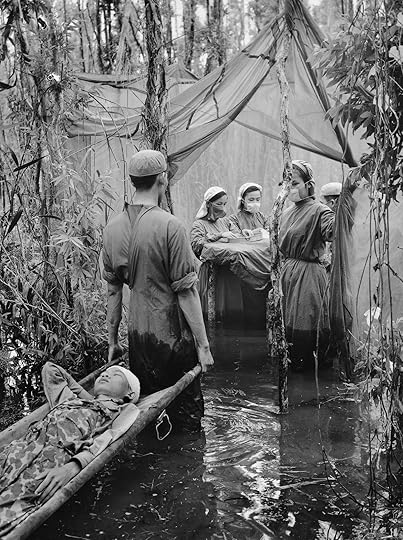 Sept. 15, 1970A victim of American bombing, ethnic Cambodian guerrilla Danh Son Huol is carried to an improvised operating room in a mangrove swamp on the Ca Mau Peninsula. This scene was an actual medical situation, not a publicity setup. The photographer, however, considered the image unexceptional and never printed it.
Sept. 15, 1970A victim of American bombing, ethnic Cambodian guerrilla Danh Son Huol is carried to an improvised operating room in a mangrove swamp on the Ca Mau Peninsula. This scene was an actual medical situation, not a publicity setup. The photographer, however, considered the image unexceptional and never printed it.IMAGE: VO ANH KHANH/ANOTHER VIETNAM/NATIONAL GEOGRAPHIC BOOKSWe were more alive in wartime, working on the border between life and death. NGUYEN DINH UU
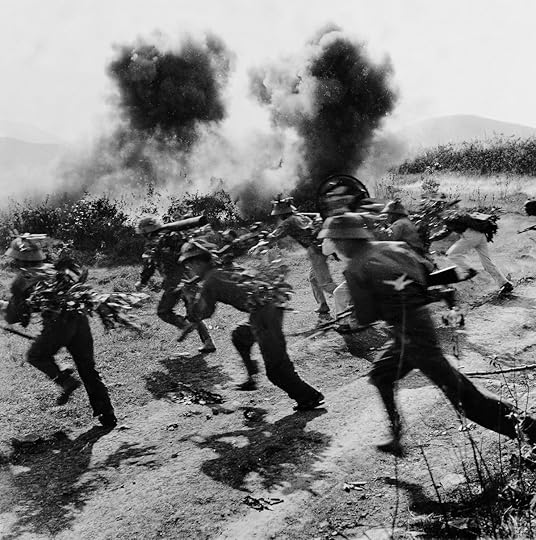 1972NVA soldiers dash across the open ground near strategic Highway 9 in southern Laos during Operation Lam Son 719, the South's failed attempt to cut the Ho Chi Minh Trail.
1972NVA soldiers dash across the open ground near strategic Highway 9 in southern Laos during Operation Lam Son 719, the South's failed attempt to cut the Ho Chi Minh Trail.IMAGE: NGUYEN DINH UU/ANOTHER VIETNAM/NATIONAL GEOGRAPHIC BOOKS
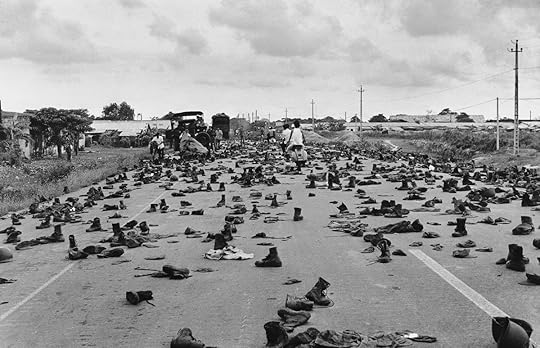 April 30, 1975
April 30, 1975Combat boots litter the road on the outskirts of Saigon, abandoned by ARVN soldiers who shed their uniforms to hide their status. "I'll never forget the shoes and the loud 'thump, thump, thump' sound as we drove over them," recalled the photographer. "Decades of war were over and we finally had peace."
IMAGE: DUONG THANH PHONG/ANOTHER VIETNAM/NATIONAL GEOGRAPHIC BOOKS
The survivors are called witnesses of history. I don't know if we ourselves are witnesses, but our photographs certainly are. They paid the price with blood.
DOAN CONG TINH
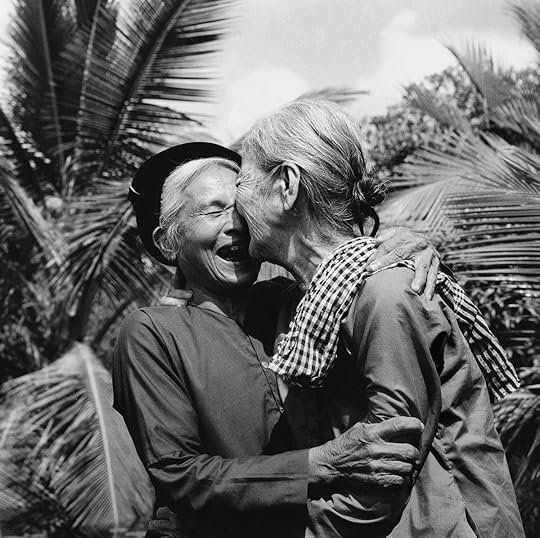 May 1975
May 1975Elders from North and South embrace, having lived to see Vietnam reunited and unoccupied by foreign powers.
IMAGE: VO ANH KHANH/ANOTHER VIETNAM/NATIONAL GEOGRAPHIC BOOKS
Curation: Alex Q. Arbuckle
Images: Another Vietnam
Special thanks: Doug Niven
http://asok22.wix.com/rifle-range-boy
http://.facebook.com/farouk.gulsara
www.riflerangeboy.com

Published on June 01, 2017 09:14
May 30, 2017
Heaven on Earth?
"Don't ask too many questions, sometimes it is better to just let go and follow the pack. Follow the people who are experts and know more than us!" At the end of our intellectual discourse on religion, this is the best my friend could tell me. I think that aptly explains the current situation we are in.
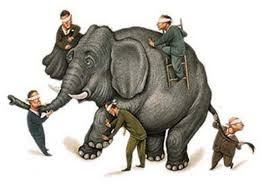
There was a time in our civilisation, we were all clueless about the things around us. One blind leading another, we all used to grope around making sense of things as we moved around in an environment that never failed to awe us. Initially, simple explanations sufficed to satisfy our curiosity. Answers begot more questions and our thirst for knowledge and desire to know the Truth never got doused.
Then a group of self-appointed beholden of the race came to the fore to claim of direct communications with the Maker. They claim to have obtained fresh rolls hot out of the oven! Our answers are answered and that we have reached the zenith of our understanding. That, we should not kid our minuscule minds to comprehend the master plan set by the Agent Intellect. That we should just accept and not prod too much.
These leaders' action smattered of power and control but who are we to question? They put us the fear of eternal damnation and the horrid pain of hell fire. We cow to submission.
On the other hand, tribes who dwelled in an environment of discourse, constructive argumentation and scientific thinking, always questioning the known and experimenting the unknown, reached progress of dizzying heights. The naysayers lament that their advancement is not the one favoured by the Agent Intellect but who cares. They have their society in order and their life peaceful. After all, that is what we want. Peace on Earth and Heaven on Earth!http://asok22.wix.com/rifle-range-boy
http://.facebook.com/farouk.gulsara
www.riflerangeboy.com

There was a time in our civilisation, we were all clueless about the things around us. One blind leading another, we all used to grope around making sense of things as we moved around in an environment that never failed to awe us. Initially, simple explanations sufficed to satisfy our curiosity. Answers begot more questions and our thirst for knowledge and desire to know the Truth never got doused.
Then a group of self-appointed beholden of the race came to the fore to claim of direct communications with the Maker. They claim to have obtained fresh rolls hot out of the oven! Our answers are answered and that we have reached the zenith of our understanding. That, we should not kid our minuscule minds to comprehend the master plan set by the Agent Intellect. That we should just accept and not prod too much.
These leaders' action smattered of power and control but who are we to question? They put us the fear of eternal damnation and the horrid pain of hell fire. We cow to submission.
On the other hand, tribes who dwelled in an environment of discourse, constructive argumentation and scientific thinking, always questioning the known and experimenting the unknown, reached progress of dizzying heights. The naysayers lament that their advancement is not the one favoured by the Agent Intellect but who cares. They have their society in order and their life peaceful. After all, that is what we want. Peace on Earth and Heaven on Earth!http://asok22.wix.com/rifle-range-boy
http://.facebook.com/farouk.gulsara
www.riflerangeboy.com

Published on May 30, 2017 09:01
May 28, 2017
Rifle Range – Penang's colourful time capsule
http://www.thestar.com.my/metro/views/2017/04/25/highrise-heartland-of-local-chinese-a-visit-to-rifle-range-flats-is-an-eyeopening-and-humbling-exper/
Tuesday, 25 April 2017BY ARNOLD LOH – PINANG POINTSI WAS filled with anticipation when work took me to see some people in Rifle Range Flats, Penang, last week.
After the appointment, I wandered about and had the pleasure of chatting with a hawker about her grilled chicken backsides. That's bishop's nose, for you.But not all pressmen relish visiting this place. And you can't blame them because during the 2013 General Election campaign someone in one of the flats filled a plastic bag with urine and threw it down at journalists and politicians walking below.Thank goodness it did not land on anyone.Two weeks ago, water rained down on journalists while they were photographing 14 motorcycles parked beside Block B that had been burned by arsonists. They saw soapy water gushing down from a washing machine outlet hose that jutted out of the rear balcony of a fifth-floor unit.When these press corp shouted in revulsion, an elderly woman from that unit barked back in Hokkien.“Ha mik? Mien sey, ah?” (What? No need to wash clothes, ah?)Despite all this, I enjoy going to Rifle Range Flats when there’s a reason to do so.The 3,699 flat units in nine blocks have 99-year leasehold titles. All are one-room affairs, except for four corner units per floor. The corner units have two rooms each.Six blocks have 17 floors, while three blocks have 18. These nine blocks take up just 4ha, based on Google Earth Pro’s land measuring tool.Between 8,000 and 10,000 people are estimated to live here, so the biological load is heavy and the place feels claustrophobic.Boundary Road — the main traffic artery through here — is only 8m wide. The gap from one block to another is just 15m to 20m.Yet going there feels like a socio-cultural exploration — an adventure — for me.Rifle Range Flats is a living, functioning monument of humanity when it was not yet addicted to fossil fuel. It was built in 1969, the same year construction on the first Boon Siew Honda assembly plant started.At the time, he kapcai (underbone) motorcycles were not yet the vogue, and cars were trophies of the rich.Rifle Range Flats’ pioneers were cyclists. If you plan on exploring Rifle Range Flats, then carpool, or ride a bicycle or motorcycle. I froze wide-eyed upon seeing a tray of 24 skewers of richly marinated chicken backsides inside a glass display along the congested, haphazardly-placed hawker stalls below Blocks H and G.The elderly lady sells it at RM1.30 a stick, grilled on the spot. Each skewer had five to six chicken backsides, depending on their sizes.I tried to find out who loved to eat them, how many they might eat in one go, how she acquired so many chicken butts to sell, what the marinade was, how she cleaned them and so on. Journalists are hopeless busybodies.She did not understand Cantonese or Mandarin, so I resorted to my broken Penang Hokkien – I am Cantonese Malaccan.It dawned on me that Rifle Range Flats is the heartland of Penang’s Chinese folk, set back one generation. Their way of life has been preserved.They are suffering.Many of the lifts have broken down. The water pressure is horrendous because the pipes are clogged with rust. They do not have a multi-storey car park.All these will cost tens of millions of ringgit to upgrade, so the state government has yet to get around to doing it.But it is said that what cannot be changed must be endured, and if you can stop and observe, you will see patience on the faces of these Rifle Range folk.I resolve to go back there later when I am not being chased by deadlines.Go to their market and buy groceries. Order a coffee, sit among the aged population and hopefully gain some small talk.I also need to steel my nerves and try those grilled chicken backsides.I did not dare that day and have been kicking my rear end for being a gastronomic coward.http://asok22.wix.com/rifle-range-boy
http://.facebook.com/farouk.gulsara
www.riflerangeboy.com
Tuesday, 25 April 2017BY ARNOLD LOH – PINANG POINTSI WAS filled with anticipation when work took me to see some people in Rifle Range Flats, Penang, last week.
After the appointment, I wandered about and had the pleasure of chatting with a hawker about her grilled chicken backsides. That's bishop's nose, for you.But not all pressmen relish visiting this place. And you can't blame them because during the 2013 General Election campaign someone in one of the flats filled a plastic bag with urine and threw it down at journalists and politicians walking below.Thank goodness it did not land on anyone.Two weeks ago, water rained down on journalists while they were photographing 14 motorcycles parked beside Block B that had been burned by arsonists. They saw soapy water gushing down from a washing machine outlet hose that jutted out of the rear balcony of a fifth-floor unit.When these press corp shouted in revulsion, an elderly woman from that unit barked back in Hokkien.“Ha mik? Mien sey, ah?” (What? No need to wash clothes, ah?)Despite all this, I enjoy going to Rifle Range Flats when there’s a reason to do so.The 3,699 flat units in nine blocks have 99-year leasehold titles. All are one-room affairs, except for four corner units per floor. The corner units have two rooms each.Six blocks have 17 floors, while three blocks have 18. These nine blocks take up just 4ha, based on Google Earth Pro’s land measuring tool.Between 8,000 and 10,000 people are estimated to live here, so the biological load is heavy and the place feels claustrophobic.Boundary Road — the main traffic artery through here — is only 8m wide. The gap from one block to another is just 15m to 20m.Yet going there feels like a socio-cultural exploration — an adventure — for me.Rifle Range Flats is a living, functioning monument of humanity when it was not yet addicted to fossil fuel. It was built in 1969, the same year construction on the first Boon Siew Honda assembly plant started.At the time, he kapcai (underbone) motorcycles were not yet the vogue, and cars were trophies of the rich.Rifle Range Flats’ pioneers were cyclists. If you plan on exploring Rifle Range Flats, then carpool, or ride a bicycle or motorcycle. I froze wide-eyed upon seeing a tray of 24 skewers of richly marinated chicken backsides inside a glass display along the congested, haphazardly-placed hawker stalls below Blocks H and G.The elderly lady sells it at RM1.30 a stick, grilled on the spot. Each skewer had five to six chicken backsides, depending on their sizes.I tried to find out who loved to eat them, how many they might eat in one go, how she acquired so many chicken butts to sell, what the marinade was, how she cleaned them and so on. Journalists are hopeless busybodies.She did not understand Cantonese or Mandarin, so I resorted to my broken Penang Hokkien – I am Cantonese Malaccan.It dawned on me that Rifle Range Flats is the heartland of Penang’s Chinese folk, set back one generation. Their way of life has been preserved.They are suffering.Many of the lifts have broken down. The water pressure is horrendous because the pipes are clogged with rust. They do not have a multi-storey car park.All these will cost tens of millions of ringgit to upgrade, so the state government has yet to get around to doing it.But it is said that what cannot be changed must be endured, and if you can stop and observe, you will see patience on the faces of these Rifle Range folk.I resolve to go back there later when I am not being chased by deadlines.Go to their market and buy groceries. Order a coffee, sit among the aged population and hopefully gain some small talk.I also need to steel my nerves and try those grilled chicken backsides.I did not dare that day and have been kicking my rear end for being a gastronomic coward.http://asok22.wix.com/rifle-range-boy
http://.facebook.com/farouk.gulsara
www.riflerangeboy.com

Published on May 28, 2017 15:22
May 26, 2017
Life is very short and there's no time for fussing and fighting, my friend!
I overheard a conversation recently.
"How come she is still a pain in the butt? Now that she is seeing a therapist, I thought that she would be less toxic. Hell, no. She is still the same old nuisance. All the time and therapy down the drain!" said one in a hushed voice.
 "Well, the purpose of therapy is for her own wellbeing. Not to be a plush toy for other to squeeze," her friend replied. "It is for her to be able to withstand biatches like us!'
"Well, the purpose of therapy is for her own wellbeing. Not to be a plush toy for other to squeeze," her friend replied. "It is for her to be able to withstand biatches like us!'
That seems to be right. Counselling and therapy are not meant that it will be a sun-shiny day for everybody. The primary concern is the individual. It may sound very self-centric and narcissistic but that is the reality. This science developed around the time when the century was undergoing massive transformations. People, who before that lived their lives just as a building block in a giant jigsaw puzzle called society, started living for themselves. If ex-communication used to be a death sentence, it became irrelevant in the new era. Welcome to the century of self! It was about this time that the great monarchs and great empires crumbled. People were fed up serving others. They wanted to serve themselves. They wanted to live life for themselves. Gone in the wind was the motto 'Charity beyond self' to be replaced by 'Charity begins at home'.
The individual soon became the centre of modern society. The focus fell upon oneself to cope with the pressures exerted by the society upon individual liberty. The society was no longer the bedrock for solace. It became caustic. Every man (or woman) was for himself. They think, therefore they exist. Of course, the therapist may talk of existential psychotherapy to treat social maladies, it is in no way going to explain the purpose of our existence - is it for our individual selves of is it a continuum of something much bigger?
Life is very short and there's no time for fussing and fighting my friend!
http://asok22.wix.com/rifle-range-boy
http://.facebook.com/farouk.gulsara
www.riflerangeboy.com
"How come she is still a pain in the butt? Now that she is seeing a therapist, I thought that she would be less toxic. Hell, no. She is still the same old nuisance. All the time and therapy down the drain!" said one in a hushed voice.
 "Well, the purpose of therapy is for her own wellbeing. Not to be a plush toy for other to squeeze," her friend replied. "It is for her to be able to withstand biatches like us!'
"Well, the purpose of therapy is for her own wellbeing. Not to be a plush toy for other to squeeze," her friend replied. "It is for her to be able to withstand biatches like us!'That seems to be right. Counselling and therapy are not meant that it will be a sun-shiny day for everybody. The primary concern is the individual. It may sound very self-centric and narcissistic but that is the reality. This science developed around the time when the century was undergoing massive transformations. People, who before that lived their lives just as a building block in a giant jigsaw puzzle called society, started living for themselves. If ex-communication used to be a death sentence, it became irrelevant in the new era. Welcome to the century of self! It was about this time that the great monarchs and great empires crumbled. People were fed up serving others. They wanted to serve themselves. They wanted to live life for themselves. Gone in the wind was the motto 'Charity beyond self' to be replaced by 'Charity begins at home'.
The individual soon became the centre of modern society. The focus fell upon oneself to cope with the pressures exerted by the society upon individual liberty. The society was no longer the bedrock for solace. It became caustic. Every man (or woman) was for himself. They think, therefore they exist. Of course, the therapist may talk of existential psychotherapy to treat social maladies, it is in no way going to explain the purpose of our existence - is it for our individual selves of is it a continuum of something much bigger?
Life is very short and there's no time for fussing and fighting my friend!
http://asok22.wix.com/rifle-range-boy
http://.facebook.com/farouk.gulsara
www.riflerangeboy.com

Published on May 26, 2017 09:19
May 25, 2017
Not a day in paradise!
Line of Duty (Mini Series; BBC)
Seasons 1-4, 2012 - present
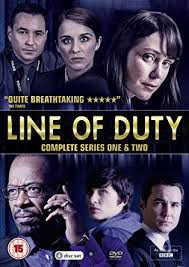 It has been described as the best TV police procedural drama ever produced. Each season carries a theme but they are all intrinsically linked to each other.
It has been described as the best TV police procedural drama ever produced. Each season carries a theme but they are all intrinsically linked to each other.
Anti-Corruption Section 12, AC#12, is a team within the police department given executive powers to look into possibilities of the miscarriage of justice, corruption and cover-ups in the force. In a way, it acts as the public's eyes that the police are supposed to serve in the first place. The miniseries show a wide intricate web of a network within the department that control each other to cover each other and paint a good name of the police force.
It is easy when a lay person commits a crime. His misdeed can easily be traced and pinned down in no time. However, when the perpetrator is one who is entrusted with the duties to maintain law and order, one within the pack, the task of unmasking the wrongdoer becomes a Herculean task! With the advanced knowledge of dodging suspicion, avoiding detection and nuances of making pieces of evidence disappear, the investigations become near impossible, like chasing shadows.
Sometimes the protectors make mistakes. Sometimes the system errs them. But the culture of witch-hunting, fear of loss of recognition or prospect of promotion makes one plunge deeper and deeper into his own grave! To cover one lie, he needs to lie again and to expunge one wrongdoing, he does another. Two wrongs do not make a right but only opens the can of worms for more scrutiny. This seems to be the common theme in all the seasons. One mistake and another and pretty soon, it becomes too overwhelming and all hell breaks loose!
Only on the little screen or Tinseltown are civil servants made to be seen to working as if their whole life is depended on it. In real life, however, these servants are little Napoleons who treat their day jobs as just a way to feed their family. With their meagre wage, in many third world countries, they have to be creative in bringing home the bacon. The world is just for the rich and famous. For the little men who toil day and night, rain and shine, health and sickness, to maintain peace for the rest, it is not a day in paradise!http://asok22.wix.com/rifle-range-boy
http://.facebook.com/farouk.gulsara
www.riflerangeboy.com
Seasons 1-4, 2012 - present
 It has been described as the best TV police procedural drama ever produced. Each season carries a theme but they are all intrinsically linked to each other.
It has been described as the best TV police procedural drama ever produced. Each season carries a theme but they are all intrinsically linked to each other.Anti-Corruption Section 12, AC#12, is a team within the police department given executive powers to look into possibilities of the miscarriage of justice, corruption and cover-ups in the force. In a way, it acts as the public's eyes that the police are supposed to serve in the first place. The miniseries show a wide intricate web of a network within the department that control each other to cover each other and paint a good name of the police force.
It is easy when a lay person commits a crime. His misdeed can easily be traced and pinned down in no time. However, when the perpetrator is one who is entrusted with the duties to maintain law and order, one within the pack, the task of unmasking the wrongdoer becomes a Herculean task! With the advanced knowledge of dodging suspicion, avoiding detection and nuances of making pieces of evidence disappear, the investigations become near impossible, like chasing shadows.
Sometimes the protectors make mistakes. Sometimes the system errs them. But the culture of witch-hunting, fear of loss of recognition or prospect of promotion makes one plunge deeper and deeper into his own grave! To cover one lie, he needs to lie again and to expunge one wrongdoing, he does another. Two wrongs do not make a right but only opens the can of worms for more scrutiny. This seems to be the common theme in all the seasons. One mistake and another and pretty soon, it becomes too overwhelming and all hell breaks loose!
Only on the little screen or Tinseltown are civil servants made to be seen to working as if their whole life is depended on it. In real life, however, these servants are little Napoleons who treat their day jobs as just a way to feed their family. With their meagre wage, in many third world countries, they have to be creative in bringing home the bacon. The world is just for the rich and famous. For the little men who toil day and night, rain and shine, health and sickness, to maintain peace for the rest, it is not a day in paradise!http://asok22.wix.com/rifle-range-boy
http://.facebook.com/farouk.gulsara
www.riflerangeboy.com

Published on May 25, 2017 09:07
May 23, 2017
How easily they crumble!
The Handmaid's Tale (1990)
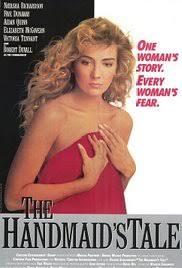
This film is an adaptation of Margaret Atwood's 1985 novel of the same name. It tells of a dystopian time in the future of a country (Republic of Gillard), facing declining fertility due to widespread pollution and sexually transmitted diseases, is ruled by a Christian fundamentalist militant group. The group rules by force and archaic theological teachings. They have degraded women as baby making machines with no rights whatsoever.
The ruling junta has devised a way to re-populate the state. They select fertile women among the general public to mate with selected officer to bear children for the officers as they and their wives are mostly barren.
Even though the plot of the story may have seemed implausible when it was written, thirty into the future, now, it no longer appears as a far-fetched idea. A small group of the population are content to propagate their lewd idea and sell it as a God-sent decree. The funny thing is that even though this group may be small, the voices are loud enough to create a clear and present danger to the rest of the population and generations to come. Somehow, the mention of the name of God cows most, even the wisest of them, to helpless submission. The most educated and the scientific-minded of them prefer silence over a debate. It is also comical to see how, in a mob situation, how easily anarchy prevails. It is so easy for the years of human civilisation to crumble and for Man to regress to their primordial beastly roots.
Rules and regulations are only made for the masses. They are always exceptions to the rule when it involves the people in power.
The mini-series based on this novel is currently being screened on Hulu.
http://asok22.wix.com/rifle-range-boy
http://.facebook.com/farouk.gulsara
www.riflerangeboy.com

This film is an adaptation of Margaret Atwood's 1985 novel of the same name. It tells of a dystopian time in the future of a country (Republic of Gillard), facing declining fertility due to widespread pollution and sexually transmitted diseases, is ruled by a Christian fundamentalist militant group. The group rules by force and archaic theological teachings. They have degraded women as baby making machines with no rights whatsoever.
The ruling junta has devised a way to re-populate the state. They select fertile women among the general public to mate with selected officer to bear children for the officers as they and their wives are mostly barren.
Even though the plot of the story may have seemed implausible when it was written, thirty into the future, now, it no longer appears as a far-fetched idea. A small group of the population are content to propagate their lewd idea and sell it as a God-sent decree. The funny thing is that even though this group may be small, the voices are loud enough to create a clear and present danger to the rest of the population and generations to come. Somehow, the mention of the name of God cows most, even the wisest of them, to helpless submission. The most educated and the scientific-minded of them prefer silence over a debate. It is also comical to see how, in a mob situation, how easily anarchy prevails. It is so easy for the years of human civilisation to crumble and for Man to regress to their primordial beastly roots.
Rules and regulations are only made for the masses. They are always exceptions to the rule when it involves the people in power.
The mini-series based on this novel is currently being screened on Hulu.
http://asok22.wix.com/rifle-range-boy
http://.facebook.com/farouk.gulsara
www.riflerangeboy.com

Published on May 23, 2017 09:01

